Morecambe Corporation Tramways
Morecambe Tramways
History
Morecambe Corporation became a tramway owner on the 23rd May 1898, when its newly built, standard-gauge line northwards from East View to Bare was opened. This was actually an extension of Morecambe Tramways Company's horse-drawn line from Strawberry Gardens (in the Borough of Heysham), northwards along the coast via the Battery Hotel and the Central Pier; operation of the new line was leased to the MTCo for a period of 10 years.
In late 1905, outside interest in the MTCo — from George Balfour, who was to go on to form Balfour Beatty & Co in 1909, a company which would acquire numerous tramway interests — roused the corporation to action, and on the 27th November 1906, it signed an Article of Agreement with the company to purchase the latter's lines (and assets) within the municipal boundary. Local opinion was however firmly against municipal operation of the tramway, but the corporation simply ignored this and pressed on with the process of acquiring operational powers.
The company-owned track between the Battery Hotel and East View was purchased by the corporation on the 26th July 1909, taking the system to its final extent of 2.4 miles. Corporation-operated services commenced over the newly acquired section two days later, the company continuing to operate services over the short stretch of line between the Battery Hotel (Inn) and Strawberry Gardens, which was wholly within the Borough of Heysham.
The tramway seems to have continued making a profit under municipal ownership, at least until the mid 1920s, the corporation having doubled large sections of track before the Great War.
Morecambe seems to have constantly been at war with itself over the trams, with factions squabbling about conversion to electric traction or better still, as some thought, closure. The corporation branched out into bus operation in 1919, striking an agreement with the MTCo in 1924 to run joint services between Morecambe and Heysham, the company closing its tramway on the 24th October that year.
The anti-tramway lobby eventually won out, the last tram running on the 6th October 1926. This was in fact the last municipally owned horse tramway on the British mainland, only being outlasted by a company-owned concerned, the Pwllheli and Llanbedrog Tramway, by two years.
Uniforms
Although Morecambe Corporation had been a tramway owner since 1898, it wasn't until 1909 that it operated services itself, prior to this, leasing its line to the Morecambe Tramways Company. Several photographs exist which suggest that the corporation initially continued the policy of the tramway company (see link), with staff wearing smart but informal attire: i.e., shirt, tie, jacket and trousers, along with the fashionable headgear of the day, at this time, the flat cap.
Around the time of the Great War, or shortly thereafter, the corporation appears to have begun issuing tramcar staff with uniforms, though possibly only those individuals working full time, as some photographs from this period show individuals in informal attire. Drivers wore double-breasted, 'lancer-style' tunics, with buttons narrowing from top to bottom, whereas conductors' were issued with single-breasted jackets with upright collars; the latter possibly bore insignia, though this cannot be confirmed either way at the moment. Caps were in a military style with a tensioned crown (top), but do not appear to have carried a cap badge of any kind.
Drivers were also issued with double-breasted greatcoats with high fold-over collars, the entire garment devoid of badges.
A single photo of an inspector has survived (from the 1920s), which shows the subject wearing a single-breasted jacket edged in a finer material than the main body, with hidden buttons — or more likely an hook and eye affair — a slit breast pocket and upright collars; the latter probably carried the designation Inspector in embroidered script lettering. The cap was in a military style, and like the tramcar staff, appears not to have carried a badge.
There is some suggestion that the corporation may have employed female conductresses in the 1920s, though nothing further about them or their uniforms is known (assuming they had any).
Further reading
For a history of Morecambe's tramways, see: 'The Lancaster and Morecambe Tramways' by S Shuttleworth; Oakwood Press (1976).
Images
Drivers and conductors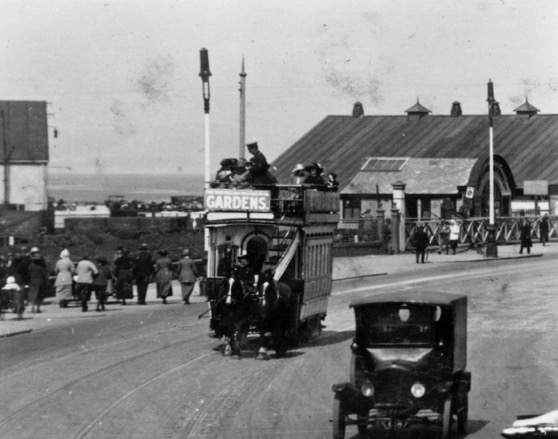
An unidentified Morecambe Corporation Tramways horsecar — photo undated, but possibly taken shortly after the Great War. Photo courtesy of the Tramways and Light Railway Society, with thanks to David Voice.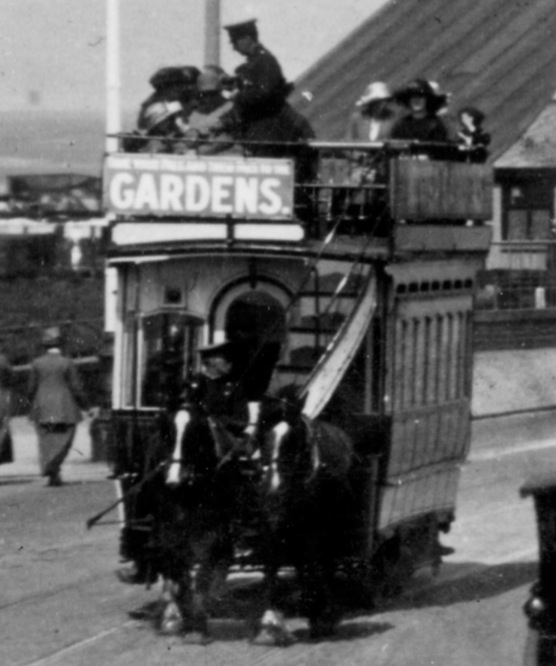
A blow-up of the above photo showing the crew, both wearing military-style caps, and the driver clearly wearing a 'lancer-style' tunic.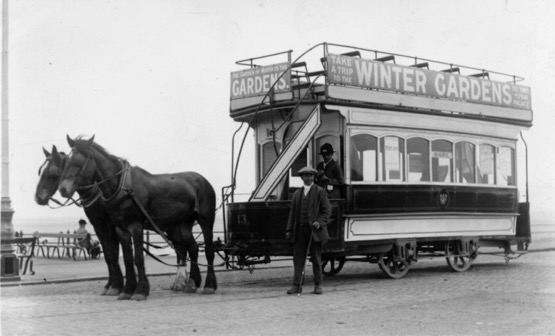
Horsecar No 13 with driver, and possibly a conductress — photo undated, but judging by the large flat cap, probably taken in the 1920s. Photo courtesy of the Tramways and Light Railway Society, with thanks to David Voice.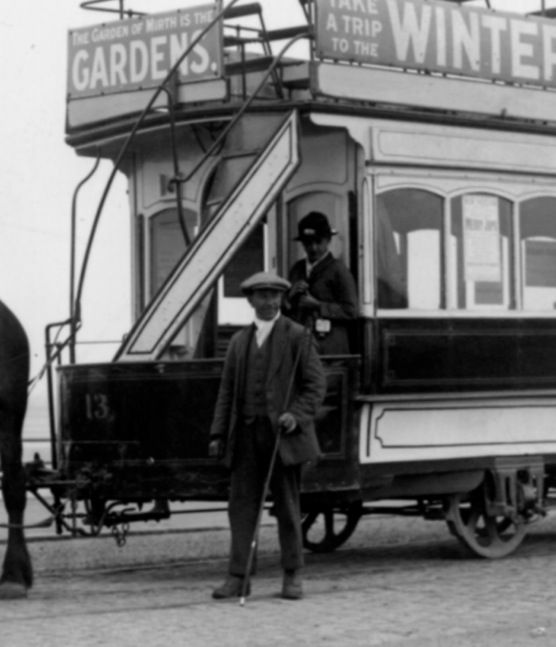
A blow-up of the above photo showing the driver and a lady who is probably a conductress given that she appears to be wearing a ticket punch. The driver is wearing informal attire.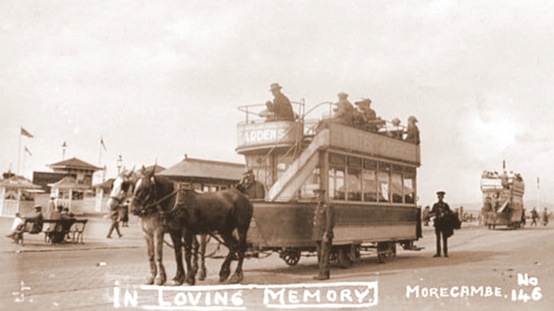
Horsecar No 6 with uniformed crew on the promenade opposite Central Pier — photo undated, but probably taken in the 1920s.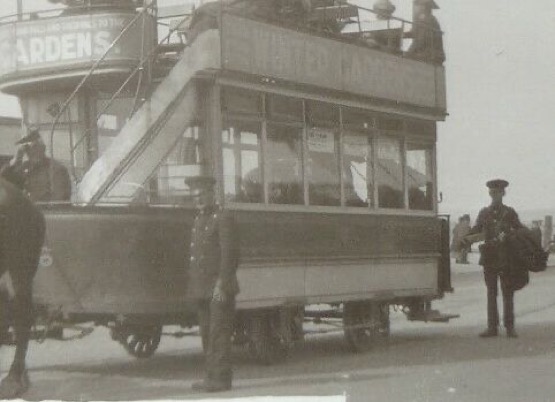
A blow-up of the above photo showing two drivers (in 'lancer-style' jackets) and the conductor (at the rear in single-breasted jacket). All three are wearing military-style caps. 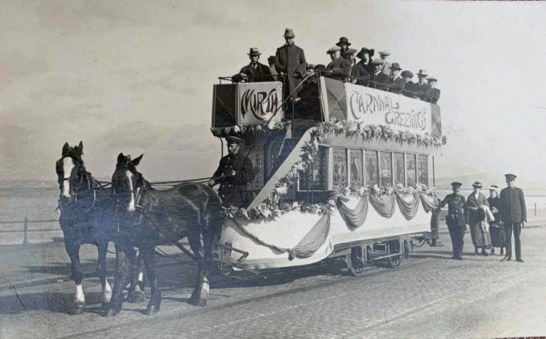
A decorated and heavily loaded MCT horse car stands on the promenade — photo undated, but judging by the fashions, probably taken in the early 1920s. Photo courtesy of the Geoff Knight Collection.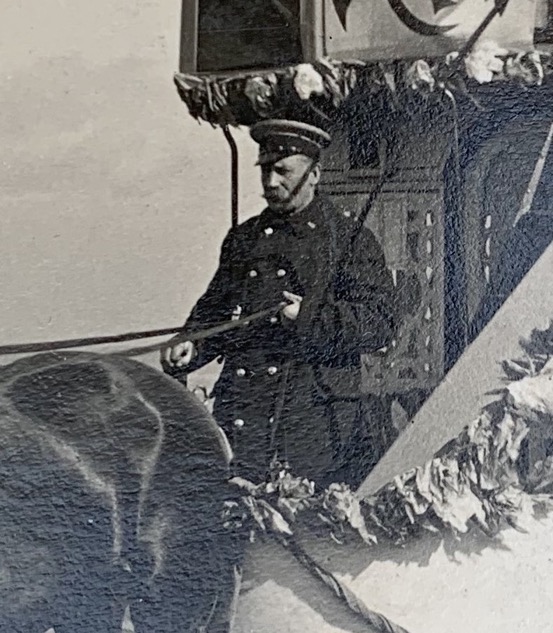
A blow-up of the above photo showing the driver, in double-breasted greatcoat and cap, seemingly devoid of insignia.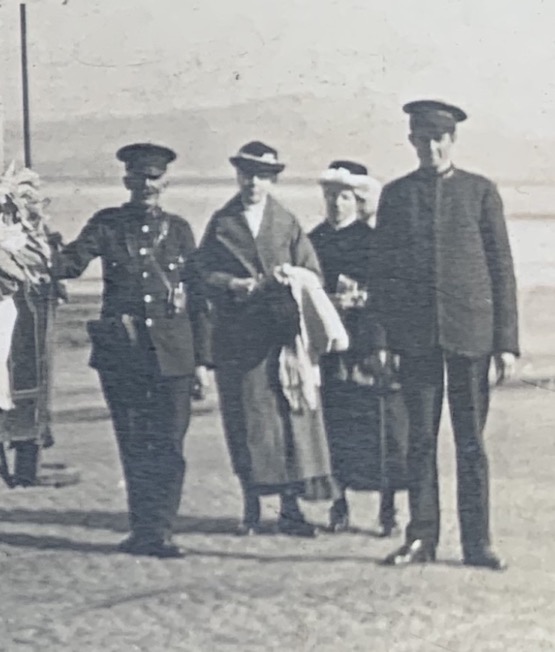
Another blow-up of the above photo, this time showing the conductor and an inspector. Neither man appears to be wearing a cap badge, embroidered or otherwise.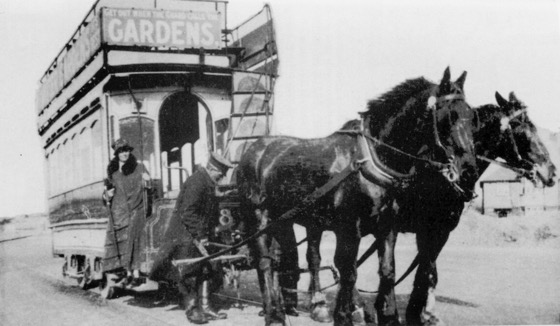
The driver of Horsecar No 8 unhitches his horses at Bare on the last day of operation, 6th October 1926. Photo courtesy of the Tramways and Light Railway Society, with thanks to David Voice.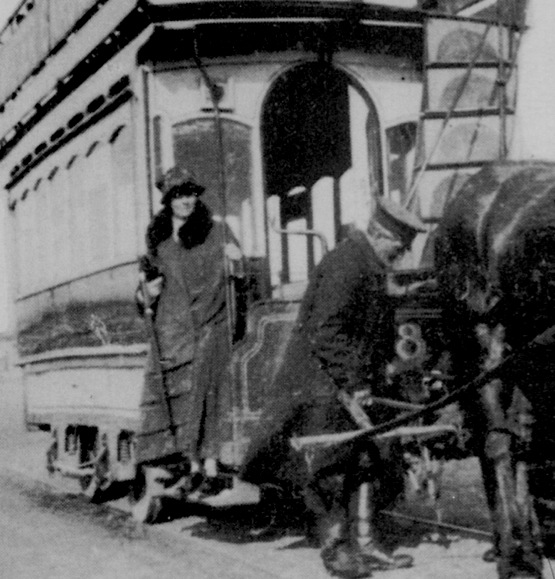
A blow-up of the above photo showing the driver, in greatcoat and military-style cap.
Senior staff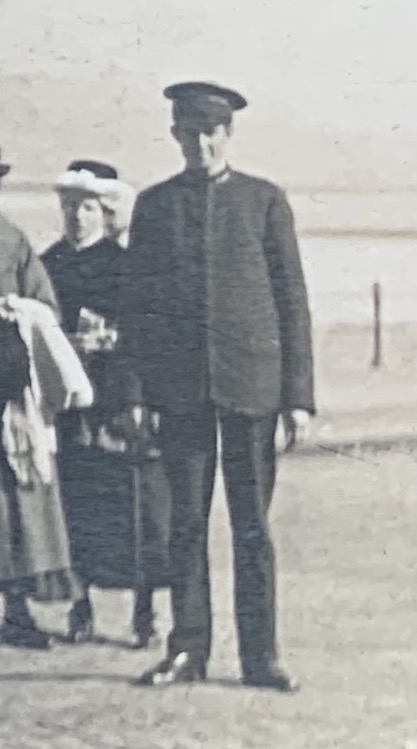
A blow-up of the 1920s decorated-tram photo above showing the inspector. He is wearing typical 'tramway inspector' garb, the collars almost certainly stating his grade in embroidered script lettering.